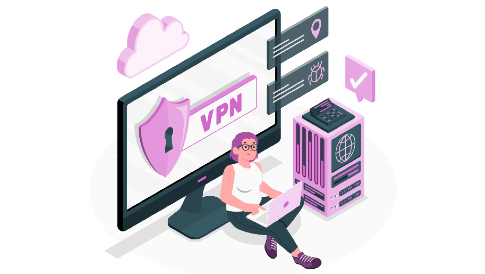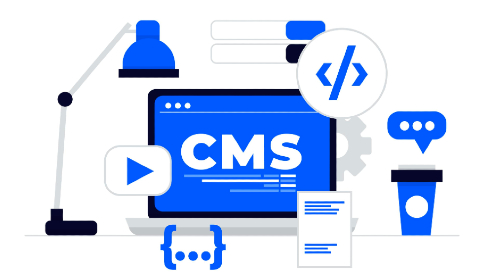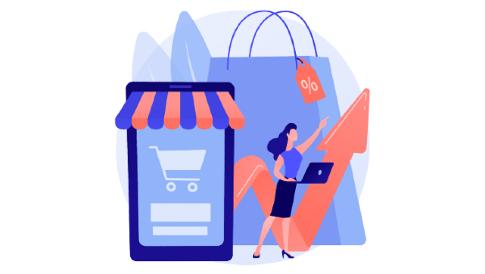A/B Testing 101: Integrating Chatbot Solutions To Your Ecommerce Site
Chatbots and ecommerce are a match made in heaven. These bots are your customer support assistants, upselling partners, shopping assistants, and more. But to get them to do the work for you, you’ve got to know what exactly your business needs.
And what better way to do that than by A/B testing what you’ve got? But before getting into the how, here’s what chatbots and what they mean for your business.
What Chatbots Bring To Your Business

A chatbot is a friendly salesperson on your website, available 24/7 to answer customer questions, guide them to products, and even process simple orders. Here are a few benefits you’ll get when you bring a chatbot on board:
- Answering FAQs on autopilot: Chatbots can handle many frequently asked questions (FAQs) about your products, shipping, returns, and more. This frees up your team’s time and provides instant answers to customers.
- Personalized product recommendations: Chatbots can use customer data and purchase history to suggest relevant products, increasing the chance of a sale.
- 24/7 support: Unlike human employees, chatbots can answer customer questions and provide basic support around the clock, which can greatly improve customer satisfaction.
- Order tracking and updates: Chatbots can keep customers informed about their order status, reducing their need to contact customer service.
- Streamlined checkout process: Some chatbots can even guide customers through the checkout process, making it faster and easier for them to complete their purchases.
These are some of the benefits of using chatbots on your e-commerce website. If you have questions or concerns about this, guides that can help you learn more about chatbot solutions or similar topics are a great place to start. They’ll show you how exactly they work and how your business might benefit from this tech convenience.
To draw the benefits, you’ve got to know the right way to integrate chatbots into your website.
A/B Testing
A/B testing involves creating two slightly different versions of something, say, a product page or a chatbot greeting, and showing them to different website visitors. You then track which version performs better, the one that resonates most with your customers.
A/B Testing Your Chatbot
So, how can you use A/B testing to make your chatbots even more awesome? Here’s how it works:
- Decide what aspect of your chatbot experience you want to test. This could be anything from the initial greeting to how it recommends products.
- Create two slightly different versions of the chosen element. For example, you could test a friendly greeting like “Hi there! How can I help you today?” against a more formal one like “Welcome to our store. Can I assist you with anything?”
- Use your website’s A/B testing tools to ensure that roughly half of your visitors encounter Version A and the other half see Version B.
Once your tools have collected enough data, analyze which version resulted in better outcomes. This could be higher click-through rates on product recommendations, more completed purchases, or simply a higher customer satisfaction rating.
Key Elements to Test
Here are some key elements you can A/B test to optimize your chatbot:
- Chatbot placement: Where should your chatbot live on your website? Test placing it on the bottom corner, embedded within product pages, or as a pop-up triggered by specific actions.
- Trigger points: When should the chatbot initiate conversation? Should it appear immediately upon arrival or wait until a visitor shows browsing behavior?
- Conversation flow: How does the conversation unfold? Test different question prompts, response styles (informative vs. casual), and the order in which information is presented.
- Visual design: Does your chatbot’s appearance match your brand and website aesthetic? Test different colors, avatars, and chat window styles.
Strategically A/B testing these elements can help you determine the most effective ways for your chatbots to keep your customers engaged and ultimately drive sales.
Crafting Winning A/B Tests for Chatbots

Here’s a step-by-step guide to help you create winning tests and optimize your virtual assistant:
Step 1: Identify Your Testing Goal
Before you get started, define your goals for your A/B test. Some of your goals could be increasing click-through rates on product recommendations or reducing cart abandonment rates.
You could also focus on improving customer satisfaction with the chatbot experience or boosting the number of inquiries handled by the chatbot.
Step 2: Formulate Your Hypothesis
Think of your hypothesis as an educated guess about what will work better. For example, you could try out a friendly and informal greeting (“Hi there!”) will lead to a higher engagement rate than a formal one (“Welcome to our store”).
Step 3: Choose Your Success Metrics
How will you measure the success of your A/B test? You can focus on common chatbot metrics like:
- Click-through rates (CTRs): How often users click on links or buttons presented by the chatbot.
- Conversion rates: The percentage of visitors who complete a desired action (e.g., purchase, sign-up).
- Customer satisfaction scores: Feedback gathered through surveys or chat ratings.
- Number of inquiries resolved: How many customer questions are handled by the chatbot without needing human intervention?
Correctly measuring these metrics will show whether your chatbot is meeting its requirements or needs tweaking.
Step 4: Design Your Variations
When it comes to designing your variations, you’ve got to start by keeping it simple. Don’t introduce too many drastic changes between variations. Focus on testing one element at a time. Also, make sure both variations are clear, user-friendly, and easy to understand.
Step 5: Run the Test and Analyze Results
Once you’ve set up your variations, unleash the A/B test on your website.
Analyzing Your A/B Test Results
Start by looking for statistically significant differences. If your website’s A/B testing tools show statistically significant improvements, they’re likely due to your changes and not just chance.
Also, focus on the metrics that matter. Did one variation lead to a higher click-through rate on product recommendations? Perhaps it resulted in fewer abandoned carts? Identify the variation that best achieves your goals.
Once you do, integrate the variation that performed best across your chosen metrics into your live chatbot. If there’s room for improvement, consider what went wrong with the underperforming variation and use those insights to refine it for future tests.
In Closing
A/B testing isn’t one-and-done. You’ve got to keep at it. Identify areas for improvement, formulate new hypotheses, and run fresh tests to continuously optimize your chatbot’s performance. This is the best way to reap the benefits of chatbot solutions on your e-commerce site.




Leave a Reply